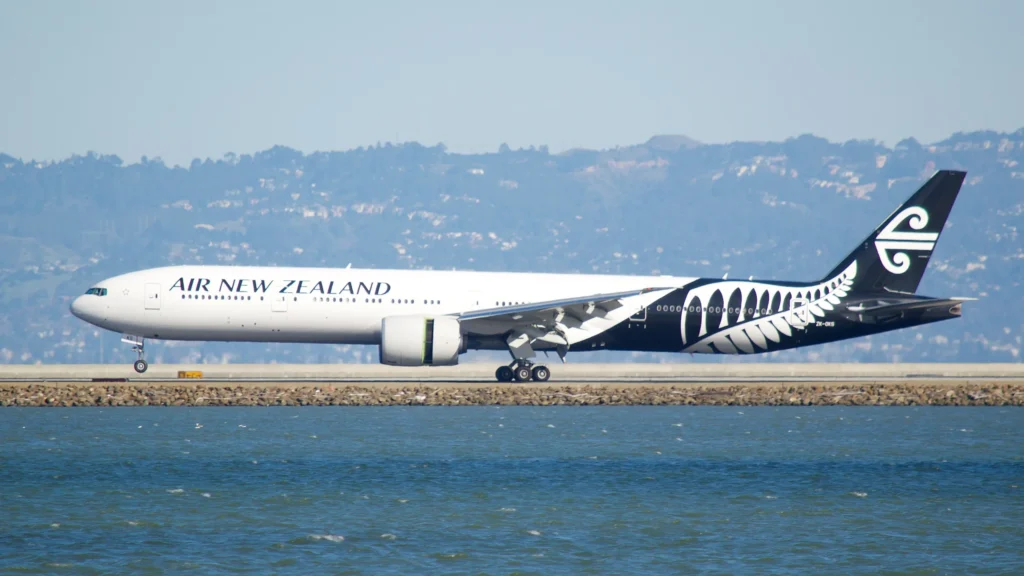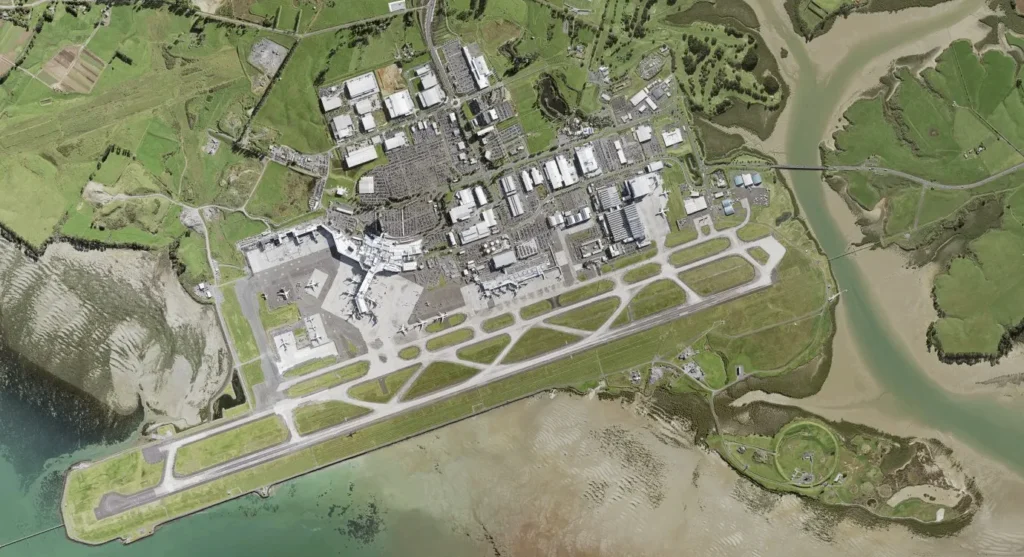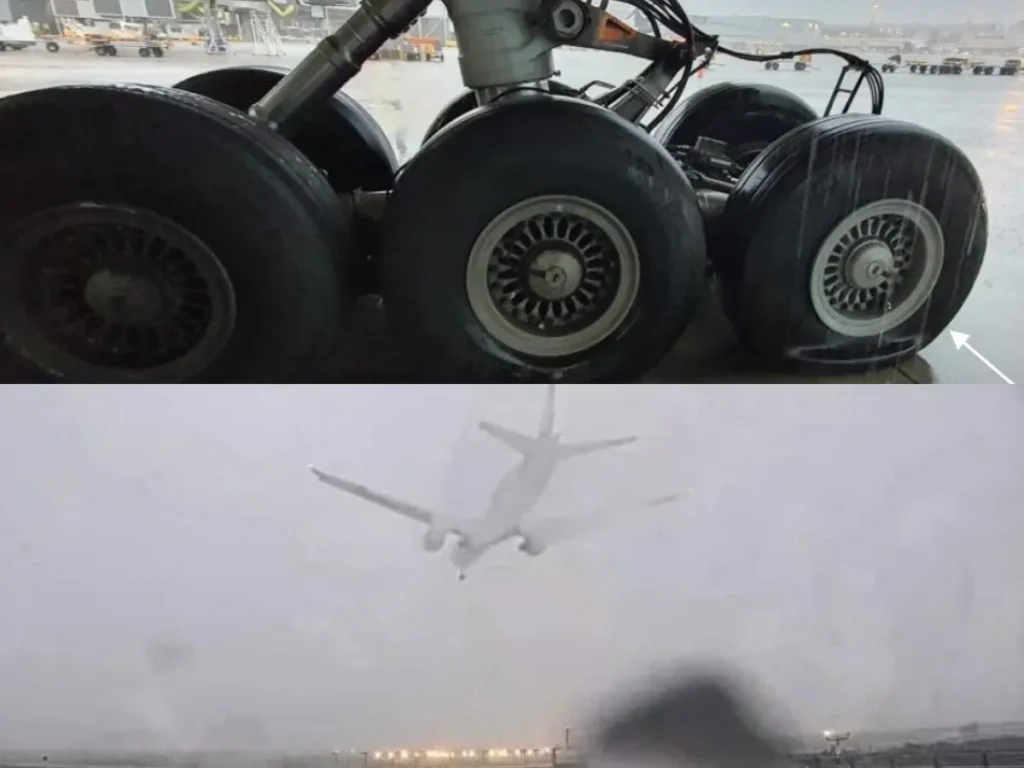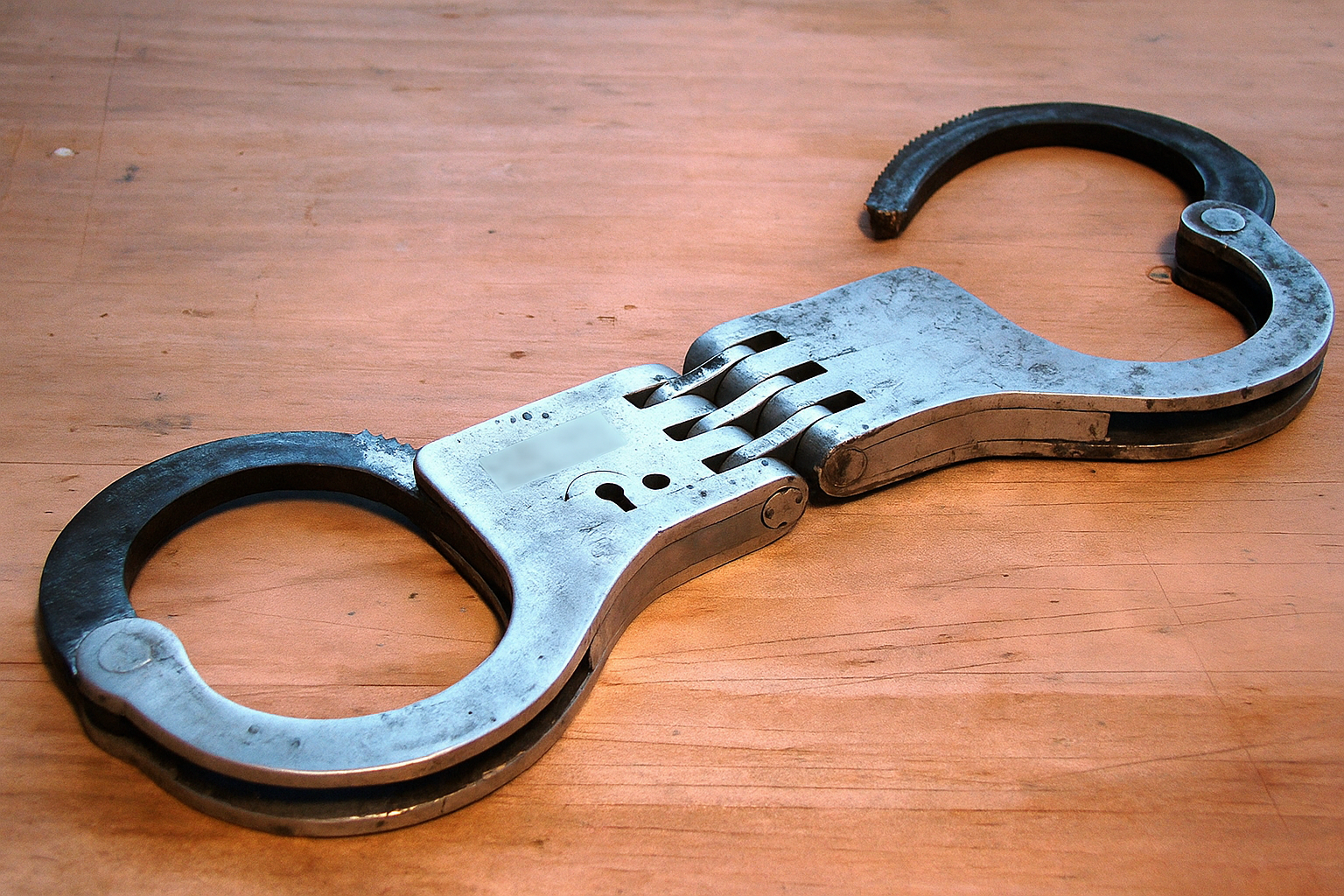
AUCKLAND- New Zealand’s Transport Accident Investigation Commission concluded that pilot error caused an Air New Zealand (NZ) Boeing 777-300ER to veer off the runway and strike multiple runway edge lights during landing at Auckland International Airport (AKL).
The investigation determined that the captain failed to compensate for the aircraft’s control system response after disengaging the autopilot too late during the approach sequence.
 Air New Zealand Boeing 777-300ER; Photo- Bill Abbott | Wikimedia Commons
Air New Zealand Boeing 777-300ER; Photo- Bill Abbott | Wikimedia CommonsAir New Zealand 777
The Air New Zealand (NZ) twinjet departed Melbourne (MEL) and approached Auckland (AKL) on January 27, 2023, carrying 271 passengers and 16 crew members.
The aircraft conducted an ILS/DME approach to runway 05R under challenging weather conditions with heavy rainfall and variable crosswind patterns.
The crosswind conditions changed in both direction and strength throughout the approach phase, creating additional complexity for the landing.
The Boeing 777’s autopilot system operated in runway-alignment mode throughout the approach phase, automatically compensating for the crosswind conditions.
The system began applying left aileron and right rudder inputs at 500 feet above ground level to counter the left crosswind and maintain the aircraft’s position on the runway centerline.
The autopilot continued making these corrections as wind conditions varied, successfully keeping the aircraft aligned with the runway while maintaining target approach speed.
 Auckland Airport; Photo- Wikipedia
Auckland Airport; Photo- WikipediaTiming Error
Air New Zealand’s standard operating procedures recommend pilots disengage the autopilot between 300 and 600 feet above ground level. This protocol provides pilots sufficient time to establish manual control before beginning the landing flare manoeuvre.
However, the captain deviated from this procedure and maintained autopilot engagement until the aircraft reached just 67 feet above ground level.
The aircraft had already crossed the runway threshold when the captain finally disengaged the autopilot system.
The investigation timeline reveals a compressed sequence of critical actions following autopilot disengagement.
The crew initiated thrust lever retardation to idle power just one second after deactivating the autopilot.
The landing flare began 3 seconds after autopilot disengagement, providing minimal time for the pilot to establish proper manual control of the aircraft.
Pilot Input Faults
The Transport Accident Investigation Commission identified a crucial system behaviour that contributed to the incident. The autopilot’s runway-alignment mode automatically returns flight controls to neutral positions when the system disengages.
Investigators emphasised that pilots must actively hold the control inputs that the autopilot had maintained to continue the established flight path. Flight data recorder analysis revealed that the pilot failed to maintain the left aileron input that the autopilot had been applying to counter the crosswind conditions.
Loss of Control
The failure to maintain proper control inputs caused the Boeing 777 to roll 3.69 degrees to the right and begin drifting away from the runway centerline. The crosswind conditions continued changing during this critical phase, with wind speed decreasing and the wind direction backing further to the left.
The investigation determined that the pilot could not effectively counter the combination of the aircraft’s rightward roll and the changing crosswind conditions within the limited time available.
 Air New Zealand Boeing 777 Runway light strike; Photo- NZ Herald; Compiled by Aviation A2Z
Air New Zealand Boeing 777 Runway light strike; Photo- NZ Herald; Compiled by Aviation A2ZDamage Assessment
The aircraft touched down just 9 seconds after autopilot disengagement and immediately veered off the runway onto the sealed shoulder area.
The Boeing 777 struck six runway edge lights before the crew regained control and returned the aircraft to the runway centerline.
The investigation concluded that this runway excursion was “virtually certain” given the sequence of actions, regardless of runway surface conditions. Although the runway surface was wet from rain, investigators noted no standing water was present that would have contributed to the incident.
Safety Outcome and Aircraft Damage
All 271 passengers and 16 crew members escaped injury during the runway excursion incident. However, the Boeing 777 sustained significant damage to its landing gear systems.
Five of the six right main landing gear tires were damaged, with the rear inboard tire completely deflating
Additional damage occurred to the right brake assembly and associated wiring harness, requiring extensive maintenance before the aircraft could return to service.
Stay tuned with us. Further, follow us on social media for the latest updates.
Join us on Telegram Group for the Latest Aviation Updates. Subsequently, follow us on Google News
Air New Zealand Boeing 777 with Hole will Fly Back from Brisbane to Auckland
The post Air New Zealand Boeing 777 Veered off the Runway Due to Pilot Error appeared first on Aviation A2Z.












